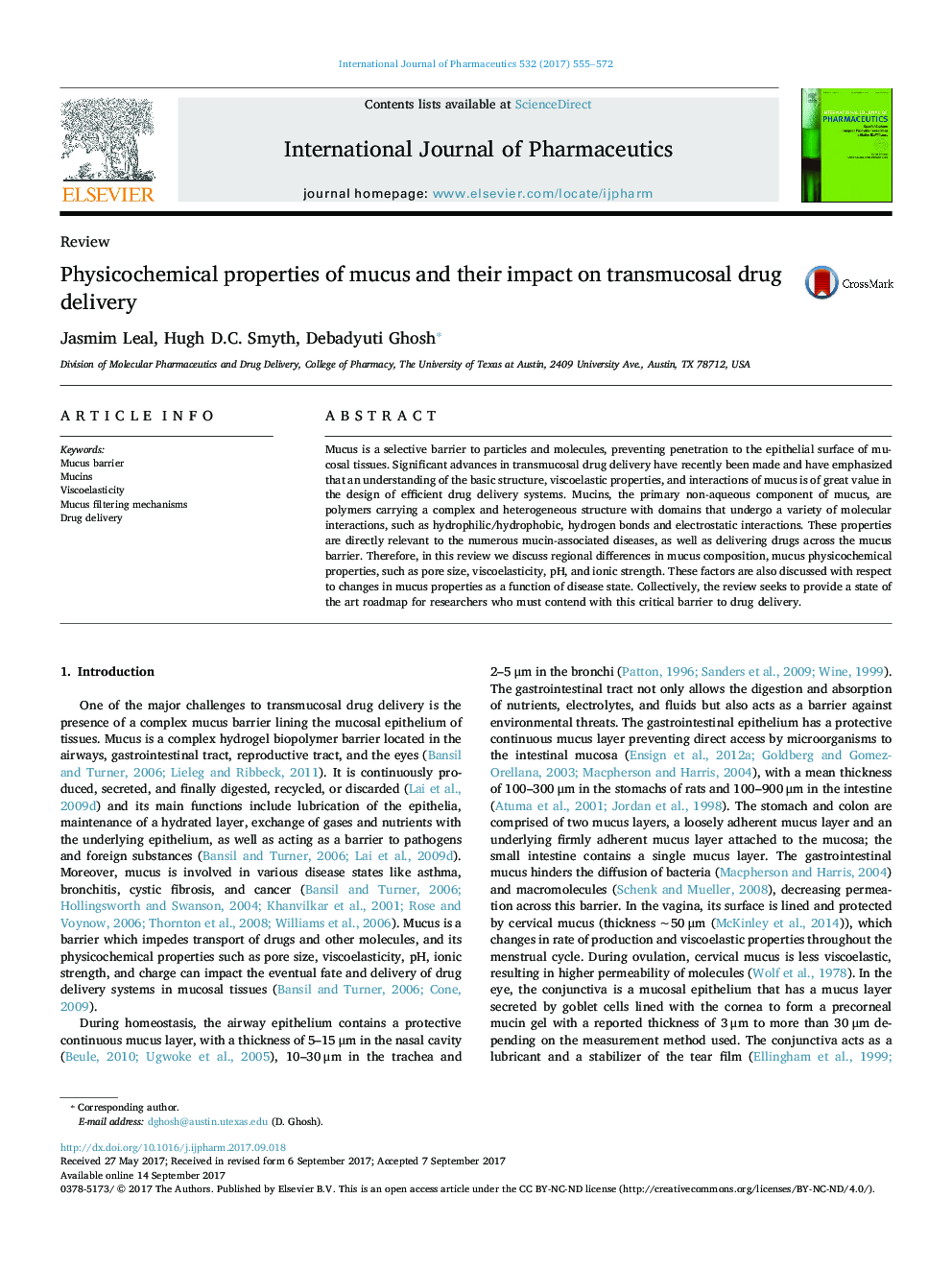| Article ID | Journal | Published Year | Pages | File Type |
|---|---|---|---|---|
| 5550002 | International Journal of Pharmaceutics | 2017 | 18 Pages |
Mucus is a selective barrier to particles and molecules, preventing penetration to the epithelial surface of mucosal tissues. Significant advances in transmucosal drug delivery have recently been made and have emphasized that an understanding of the basic structure, viscoelastic properties, and interactions of mucus is of great value in the design of efficient drug delivery systems. Mucins, the primary non-aqueous component of mucus, are polymers carrying a complex and heterogeneous structure with domains that undergo a variety of molecular interactions, such as hydrophilic/hydrophobic, hydrogen bonds and electrostatic interactions. These properties are directly relevant to the numerous mucin-associated diseases, as well as delivering drugs across the mucus barrier. Therefore, in this review we discuss regional differences in mucus composition, mucus physicochemical properties, such as pore size, viscoelasticity, pH, and ionic strength. These factors are also discussed with respect to changes in mucus properties as a function of disease state. Collectively, the review seeks to provide a state of the art roadmap for researchers who must contend with this critical barrier to drug delivery.
Graphical abstractDownload high-res image (202KB)Download full-size image
